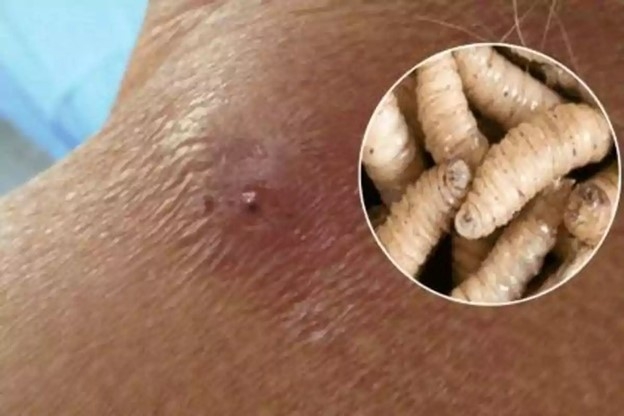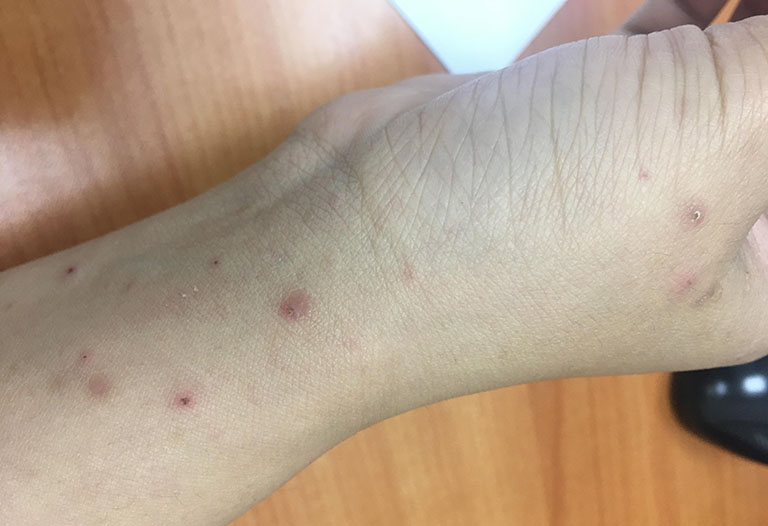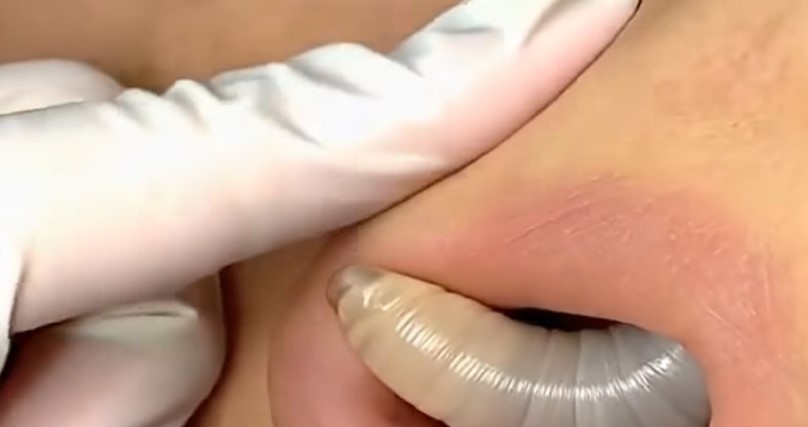Understanding Cutaneous Myiasis: A Rare Yet Manageable Condition
When embarking on a journey to tropical regions, many travelers focus on protecting themselves from the well-known risks associated with mosquito bites and other insect-related issues. However, there exists a less commonly discussed condition that can affect both visitors and locals in certain areas of Central and South America: cutaneous myiasis. This skin infection, caused by the larvae of the human botfly (Dermatobia hominis), is seldom encountered but warrants attention due to its potential impact on those who fall victim to it. Understanding this condition is essential for both prevention and treatment, allowing individuals to navigate their travels with greater awareness and security.
What Exactly Is Cutaneous Myiasis?
Cutaneous myiasis is a parasitic infection that occurs when the larvae of certain fly species invade the human skin, causing a variety of symptoms that can range from mildly irritating to severely uncomfortable. This condition, while relatively rare, has been documented for centuries in regions where the human botfly is endemic. Understanding cutaneous myiasis is crucial because early detection and prompt medical intervention can lead to a full recovery without complications.
The Lifecycle of the Human Botfly
The reproductive cycle of the human botfly is particularly fascinating and unusual. Instead of laying eggs directly onto a host, the adult female botfly attaches her eggs to a mosquito or another biting insect. When the insect subsequently bites a human, the warmth of the skin triggers the eggs to hatch. The newly emerged larvae then penetrate the skin through the bite wound or hair follicles and develop under the skin over a period of weeks. Eventually, they exit the host to continue their lifecycle in the soil. This unique method of transmission underscores the importance of insect protection for travelers in endemic regions, as the initial carrier is often a common mosquito.
Identifying Symptoms and Signs
Individuals affected by cutaneous myiasis often first notice a small, red bump on their skin that may resemble an insect bite or irritation. However, as the condition progresses, the lesion may evolve to exhibit several distinct characteristics:

- Redness and swelling surrounding the site of entry.
- Localized pain or tenderness that can vary in intensity.
- A small central opening that allows air to reach the developing larva.
- Unusual sensations, often described as intermittent movement beneath the skin.
While these symptoms can induce anxiety and discomfort, it is important to note that cutaneous myiasis is typically not life-threatening. The main concerns revolve around discomfort, the risk of secondary infections, and the psychological distress of having a parasite within the body.
Documented Medical Cases: A Look into Reality
Medical literature contains numerous reports of travelers returning from tropical regions who have experienced cutaneous myiasis. For instance, a case study highlighted a traveler from Canada who developed a skin irritation after visiting Belize. Initially misdiagnosed as a mere insect bite, further medical examination revealed the presence of cutaneous myiasis. Fortunately, medical professionals were able to safely remove the larvae, and the patient made a full recovery. Similar cases have been reported throughout South America and in travelers returning to other areas of the world, emphasizing the need for healthcare providers to be familiar with this condition.
Diagnosis and Treatment Options
Diagnosing cutaneous myiasis typically involves a thorough physical examination of the affected area. The presence of a central pore, along with persistent swelling and discomfort, can strongly indicate this condition. In some instances, medical professionals may utilize ultrasound or dermoscopy to confirm the presence of larvae beneath the skin. Early diagnosis is crucial to prevent complications, and it helps streamline the treatment process.
Treatment for cutaneous myiasis is generally straightforward and effective. It involves:

- Larva removal: A healthcare professional will carefully extract the larva through the skin opening using sterile instruments.
- Wound care: The site of entry will be cleaned thoroughly to minimize the risk of secondary infection.
- Medication: Antibiotics may be prescribed if a bacterial infection is detected.
Self-removal of the larvae is highly discouraged as incomplete extraction can lead to complications or infection. Seeking medical assistance ensures safe and effective treatment and a full recovery.
Prevention Strategies to Consider
For those traveling to or residing in areas where the human botfly is prevalent, implementing preventative measures is essential to minimize the risk of cutaneous myiasis:
- Utilize insect repellent containing DEET or picaridin, particularly during peak mosquito activity times.
- Wear long-sleeved clothing and pants to reduce skin exposure.
- Sleep under treated mosquito nets if staying in rural areas.
- Regularly check clothing and bedding for any signs of eggs, as they can sometimes be deposited on damp fabrics.
These precautionary measures not only lower the risk of cutaneous myiasis but also provide protection against other prevalent mosquito-borne illnesses, such as dengue fever, Zika virus, and malaria.
Psychological and Social Implications
Despite being physically manageable, the psychological impact of cutaneous myiasis can be quite significant. Many patients report feelings of anxiety and distress at the thought of having a parasite within their skin. This emotional reaction is not uncommon and highlights the importance of effective communication and reassurance from medical professionals. In communities where cutaneous myiasis is more familiar, cultural understanding can help normalize the experience. However, for international travelers, the unexpected diagnosis can be particularly unsettling.
Global Awareness and Relevance
While cutaneous myiasis is predominantly found in tropical regions of the Americas, the increase in global travel means that healthcare professionals around the world must be aware of this condition. Physicians in North America, Europe, and Asia have occasionally encountered cases in travelers returning from endemic areas. Raising awareness among healthcare providers is essential, as it can facilitate faster diagnosis and treatment, ultimately reducing unnecessary suffering for patients.
Conclusion: Embracing Awareness and Prevention
In summary, while cutaneous myiasis may sound alarming, it remains a rare and treatable condition. With comprehensive prevention strategies— including proper insect protection, appropriate clothing, and heightened awareness— travelers and residents can significantly mitigate their risk. For anyone who does exhibit symptoms, seeking timely medical care assures safe larva removal and complete recovery. Ultimately, public education is vital in transforming what appears to be a frightening issue into a manageable medical reality. By prioritizing awareness, prevention, and prompt treatment, communities and travelers can approach cutaneous myiasis not with fear but with confidence in modern medicine and the resources available to them.

















